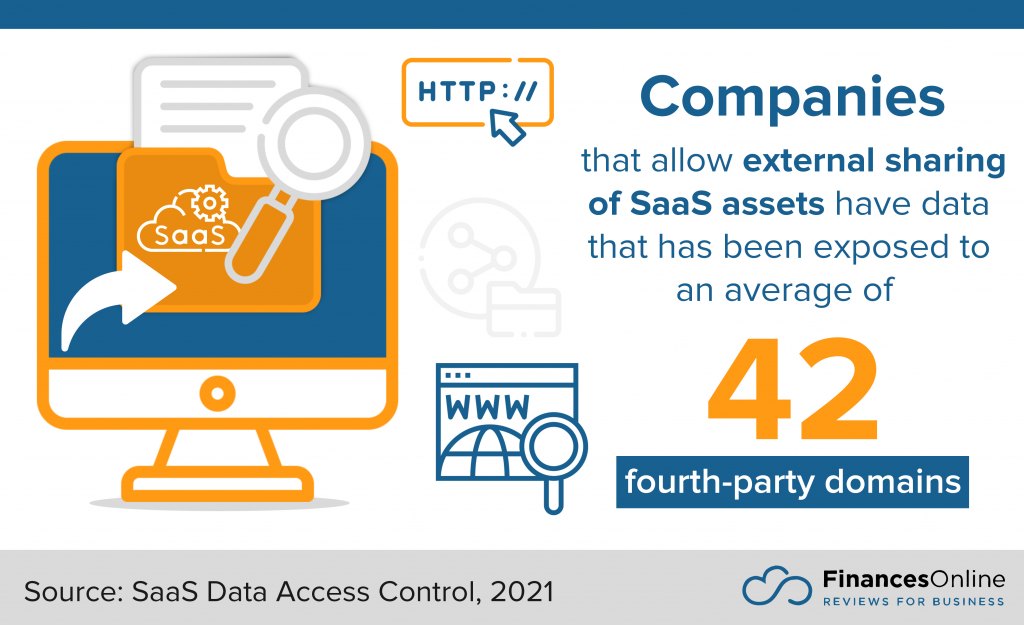Collaboration software was the only software segment that posted a positive 6% growth during the onset of COVID-19 (BusinessWire, 2021). As organizations further embrace hybrid work, collaboration software trends continue to signal that growth is unstoppable as it is redefined the future of work teams.
This is especially because only 29% of executives think that employees need to be in the office at least three days per week to keep a strong organizational culture, the rest plan to keep hybrid workplaces (NTT, 2021). If we are to examine the current proliferation of collaboration software, we can easily see that the future of work involves a mix of on-site and remote collaborations. But can technology keep up?
To help answer this question, this article will discuss the collaboration software trends for 2022. Among the topics that will be tackled on the list are current developments in the software collaboration arena that are taking shape to make way for new tools that will strengthen workplace collaboration.

Collaboration Software Trends Table of Contents
The impact of the pandemic has been transformational across all markets and industries. Results from the NTT Global Benchmarking 2021 show that 66.1% of executives agree that the pandemic has highlighted the fact that technological progress will be instrumental to future success.
As remote work became the norm, 59.7% of organizations worldwide have grown more reliant on technology (NTT, 2021). Digital transformation was pushed at the forefront to improve agility in the midst of the crisis. Meanwhile, enabling employees to become productive through collaboration tools was on top of the agenda.
Source: IDC, 2020
As the pandemic raged, organizations adopted collaboration tools to sustain creativity and innovation. The objective is not only business continuity, but to keep employees engaged. However, while 83% of employers consider remote work as successful, a lot of things still need to be addressed aside from Zoom meeting overload (PwC, 2021).
From being digitally-abled to becoming platforms infused with AI and automation, collaboration tools have come a long way and will continue to enhance the way organizations work together. These eight trends provide a clear picture of the future of workplace collaboration.
List of Collaboration Software Trends
1. Hybrid Workplaces
At least 82% of business executives plan to permanently adopt working remotely, at least part-time (Forbes, 2021). Accommodating on-site, remote, and distributed teams, also known as hybrid work, will be a permanent workplace setup in a post-pandemic environment.
When it comes to collaborating on new projects, 44% of executives find that employees perform better than before the COVID-19 pandemic. Even one study found that working from home lifts productivity by 5% (Bloomberg, 2021). These improvements are made possible by virtual collaboration tools that enable remote workers to communicate effectively.
While engagement is still a big challenge in today’s hybrid workplaces, technologies such as VR and AR, including spatial audio, are being used by organizations to simulate workplace interactions.
Employee experience is crucial in remote work. For this reason, companies will be requiring project collaboration tools that will provide environments where an organizational culture that supports company objectives will be able to flourish.

Key Hybrid Workplace Takeaways
- Hybrid work will be permanent workplace setup post-pandemic.
- The adoption of hybrid work will continue to drive the growth of collaboration tools.
- Studies show that working from home improves worker productivity.
2. Immersive Technology for Collaboration
Gamers can attest that the more immersive the game, the more realistic the experience. Workplace collaboration is reaching new levels. As organizations transitioned to remote work setups, the need for more immersive technologies for collaboration has become more apparent.
As both employers and employees discovered that video call fatigue is becoming a major concern, teams looked for ways to sustain engagement and lessen fatigue at the same time. The use of augmented reality (AR) and virtual reality (VR) in team interactions delivered positive results.
Without the need to be physically present, VR, for instance, can provide realistic settings where in-person collaboration is made possible. To cite an example, experts in automotive design and safety can collaboratively resolve conflicts even if they are located on different continents. When simultaneously placed in immersive space, these remote workers are able to collaborate in designing components.
AR, on the other hand, is able to superimpose digitally generated data over real-world elements. Co-existing within the same virtual space promotes efficiency, which is one of the major reasons why AR and VR technology can improve collaboration.
Immersive technology will continue to be at the forefront of emerging collaboration software trends, especially for industries that carry out complex projects that rely heavily on the use of 3D data.
Key Immersive Technology Takeaways
- Immersive technologies can sustain engagement and lead to a positive employee experience.
- VR and AR can provide realistic collaboration settings, thus ,improving team interactions.
- Immersive technologies will continue to drive major changes in workplace collaboration.
3. External Collaboration Will Grow
When companies engage in external collaboration, they generate new knowledge. This practice of sharing knowledge outside of the company walls also decreases the risks associated with R&D activities. Moreover, this increases a firm’s propensity to innovate.
Collaboration platforms facilitated the building of closer relationships in both the B2B and B2C arenas. As the pandemic imposed strict social distancing measures, businesses and their client base had to look for new ways to collaborate. Working with external development partners requires the sharing of sensitive documents and other assets. As a result, growth in this sector called for additional security layers in data sharing.
From guest access to shared channels, external collaboration features continue to evolve to be able to address security concerns. Businesses, together with their clients, will continue to work together. As external collaboration grows, so will the need for secure external collaboration tools.
A secure collaborative environment improves customer experience. This is crucial because 90.9% of organizations consider customer experience as a differentiator (NTT, 2021). In 2022, collaboration tools will not just serve internal teams but will also facilitate the effective generation of knowledge among organizations.

Key External Collaboration Takeaways
- External collaboration facilitates the exchange of knowledge between organizations.
- Through working with other organizations, a company’s propensity to innovate increases.
- New security features will revolutionize external collaboration.
4. Asynchronous Collaborative Environments
Meeting overload is real. In 2021, 62.9% of chief human resource officers agreed that employee well-being levels have deteriorated since the start of the pandemic (NTT, 2021). It is within this context that employee experience has risen when it comes to strategic importance.
Business leaders find asynchronous collaborative environments as effective in managing a distributed workforce living in different time zones with different workforce plans. However, asynchronous collaborative environments can be leveraged by remote teams living in the same time zone as well.
Stanford Virtual Human Interaction Lab examined the psychological consequences of spending hours per day on video chat platforms and found that video conferencing has design flaws that tire the human mind and body. Cisco’s Hybrid Work Index for October 2021 found that 48% of meeting participants didn’t speak. To avoid fatigue, executives are now using asynchronous video tools.
The three-minute video clips are watched by recipients at their most convenient time and respond using a designated channel. In doing asynchronous collaboration, messages become more focused and employees are able to acquire more productive time. In addition, 180 minutes of meetings are saved for other more productive work.
Among the technology vendors that are exploring this type of collaborative environment is Cisco’s Webex, which offers tools for sending asynchronous video, Zoom’s video voicemail and Zoom Phone, and Zoom Whiteboard asynchronous features, and also Slack’s Slack Clips that allow users to share audio, video, or screen recordings.
Key Asynchronous Collaboration Takeaways
- Virtual meetings through videoconferencing may lead to fatigue among remote employees.
- Asynchronous video tools are able to lessen meeting fatigue.
- Collaboration software is now integrated with features that allow users to send video clips in place of virtual meetings.
Most Popular Collaboration Software
- monday.com is the 2019 Webby awards winner for best productivity app and also the easiest way for your team to plan, organize, and track projects.
- Wrike lets you prioritize your assignments, monitor updates in real-time, and give timely feedback in one intuitive interface.
- Smartsheet is an award-winning, enterprise SaaS collaboration solution for organizations, offering an innovative approach to collaborating on any project or process.
- Slack is a messaging app that brings all your communication together in one place. It offers real-time messaging, archiving, and search for modern teams.
- Asana is a popular task and project management tool that allows for easier team collaboration and communication.
5. The Rise of Collaborative Flexibility
One of the challenges faced by organizations is balancing employee experience. Work experiences should be designed around what motivates and empowers humans. When surveyed about their work preferences, 38.9% of employees said they prefer to work from company premises, 30.2% prefer to work from home, and 29.9% want the option of alternating between the two (NTT, 2021).
Considering these sentiments, collaborative flexibility is being adopted by organizations. For instance, employees have mobile access to meetings to optimize the workplace. Collaboration tools are also used to communicate both synchronously and asynchronously. As workplaces adopt innovative management philosophies, technology is seen as the most important enabler.
In many circumstances, face-to-face meeting is essential. Nothing can replace conversations where one is able to gauge a message through facial expressions and body language. Hybrid work environments will require collaboration platforms and remote work tech that promote flexibility for better employee experiences.
Source: NTT 2021 Global Workplace Report
Key Collaborative Flexibility Takeaways
- Collaborative flexibility leads to positive work experiences.
- Hybrid work environments will require collaboration tools that promote flexibility.
- Flexibility is a key feature in the emerging trends in workplace collaboration.
6. Workstream Collaboration Platforms
Technology optimization is a challenge. Workstream collaboration (WSC) platforms are technology solutions that can be deployed into existing multi-vendor, multi-cloud, and multi-modal environments to glue all applications and reduce application fatigue. It is expected that by the end of 2022, 70% of organizations will rely on WSC as the primary means of communicating, coordinating, and sharing information (CIO Magazine, 2021).
The WSC tools work by eliminating multiple logins and different user interfaces. In this new environment, collaborative apps are integrated and employees no longer have to use multiple communication channels to be able to work together.
This seamless integration of all the collaboration tools will increase employee productivity and improve the workplace experience. The rising reliance on technology to support workplace strategies will drive the growth of WSC platforms. Beyond the essential work software, employers want to ensure that their employees are receiving adequate support to remain empowered in their roles.

Key Workstream Collaboration Platform Takeaways
- From technology as an enabler, the trend is now towards optimizing collaboration tools.
- New technologies will simplify the use of different applications through seamless integration.
- Workstream collaboration platforms will significantly contribute to enhanced employee experience.
7. AI Integration with Collaboration Tools
The demand for more interactive and inclusive meeting experiences will pave the way for new apps that will use meeting metrics to encourage collaboration. Zoom has identified that of the 650 million per month meeting participants, 47% are not interacting (ZDNet, 2021).
Virtual events, like video conferences, need not be a one-way broadcast. For a richer employee experience, there should be inclusion and engagement. One startup thought of making meetings more productive through the use of computer vision, AI, and natural language processing.
Taking into account the reality that most meetings are done via video conferencing, a real-time dashboard measures sentiment and engagement for meeting attendees. An engaged workforce drives business outcomes. Through this tool, organizations will be able to measure the employee experience.
AI-powered collaboration technology will radically transform virtual interaction. This trend will become one of the major foundations of the hybrid workplace.
Source: PwC Remote Work Survey 2021
Key AI Integration with Collaboration Tools Takeaways
- The future of work collaboration will be AI-powered.
- AI integration with collaboration tools will improve the employee experience.
- The use of AI in virtual events is expected to upgrade user experience.
8. Features Will Focus on Enhanced Virtual Experience
Hybrid work meetings can leave participants feeling frustrated, isolated, and disempowered. Technical problems such as poor audio, unstable connection, and background noise can distract and disengage participants.
Aside from technologies that provide immersive experiences, software developers are now focusing on the improvement of virtual meeting experiences through spatial audio. This technology will reduce communication fatigue by simulating the sound of voices in a meeting room.
Research has established that people interpret and absorb sound more effectively when it is spatially separated (Frontiers in Psychology, 2020). Spatial audio can lead to more productive meetings because attendees will accurately hear what a person is saying, which could result in more efficient and focused interactions.
Key Enhanced Virtual Experience Takeaways
- Technical challenges in virtual meetings affect employee performance.
- Among the technologies being developed to improve virtual meetings is spatial audio.
- Spatial audio aims to eliminate audio problems in virtual meetings
Rethinking the Future of Collaboration
Collaboration market trends show a very promising future for hybrid work. As rich as the dynamics of human interaction, collaboration market players are poised to explore the nuances of communication to deliver enhanced experiences.
In the collaboration software trends for 2022 that we’ve listed, we can also see that the industry is veering towards consolidation. This means that the top collaboration tools will continue to grow, but growth will be largely dependent on features that will significantly differentiate services.
While a lot of challenges need to be addressed, the collaboration software segment will continue to expand and conquer new markets, along with the proliferation of hybrid work teams.
References:
- Alexander, A., Cracknell, R., De Smet, A., Lengstaff, M., Mysore, M. and Ravid, D. (2021 May 17). What executives are saying about the future of hybrid work. McKinsey & Company
- Abril, D. (2021 December 2). Video calls can be a pain for hybrid offices. Tech companies say relief is coming. The Washington Post
- Back End News (2020 October 20). Cisco research confirms the future of work is hybrid. Cisco Research
- Blakely, L. (2021). Zoom Burnout Is Real. Here Are 4 Practical Ways to Cope. Inc.
- Brown, E. (2021 November 22) Three out of five enterprise employees miss in-person interaction when working remotely. ZDNet
- BusinessWire (2021 March 12) Global Team Collaboration Tools Market (2021 to 2026) – Growth, Trends, COVID-19 Impact, and Forecasts – ResearchAndMarkets.com. BusinessWire
- CIO Magazine (2021 April 23). How workstream collaboration tools can shape the new future of work. CIO Magazine
- Cisco (2021). Hybrid Work. Cisco
- Condon, S. (2021 September 8). Google updates Workspace with more features for hybrid work. ZDNet
- Curran E. (2021 April 22). Work From Home to Lift Productivity by 5% in Post-Pandemic U.S. Bloomberg
- Dignan, L. (2021 September 29). Read AI wants to gauge your sentiment, engagement, talk time during meetings. ZDNet
- Dignan, L. (2021 October 11). Asynchronous videos: Can the TikTok generation save us from meeting overload? ZDNet
- Dignan, L. (2021 September 20). Zoom aims for video contact centers, whiteboard and collaboration improvements. ZDNet
- Herhold, K. (2020 April 16). Working From Home During the Coronavirus Pandemic: The State of Remote Work. Clutch
- Hudson, H. (2021 May 8). Why the future of collaboration is asynchronous. Front Page
- International Data Corporation (2020 July 6). What Virtual COnferences (Still) Miss. IDC
- International Data Corporation (2021 August 30). Collaboration Applications Joined the Mainstream in 2020 with Worldwide Revenues Forecast to Nearly Double by 2025. IDC
- Iwankovitsch, E. (2021 September 16). Communication Fatigue: Can Spatial Audio Reduce Burnout? High Fidelity
- Mosher, M. (2021 October 20). Building An Unbreakable Team: The Role Of VR In An Uncertain Work World. Forbes
- NTT (2021) 2021 Global Workplace Report. NTT
- Rajguru, C., Obrist, M. and Memoli, G. (2020 November 11). Spatial Soundscapes and Virtual Worlds: Challenges and Opportunities. Frontiers in Psychology
- Ramachandran, V. (2021 february 23). Stanford researchers identify four causes for ‘Zoom fatigue’ and their simple fixes. Stanford News
- Sparrow, M. (2020 August 7). Why Do We Suffer From Zoom Fatigue? It’s All About The Sound. Forbes
- The Manufacturer (2021 August 4). Immersive tech: Making VR/AR collaboration work. The Manufacturer






















Leave a comment!